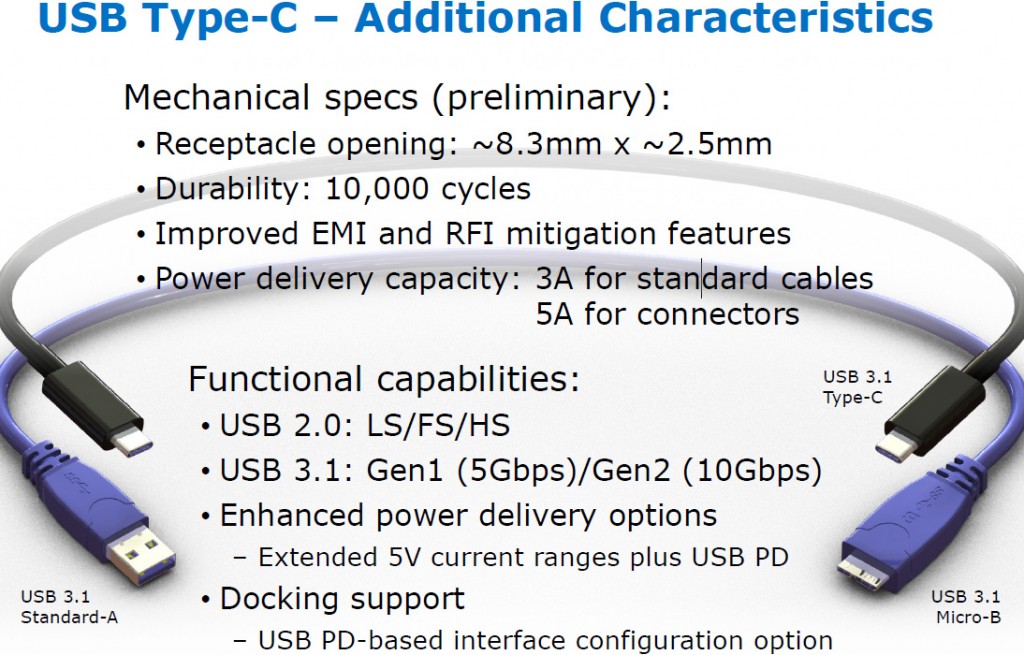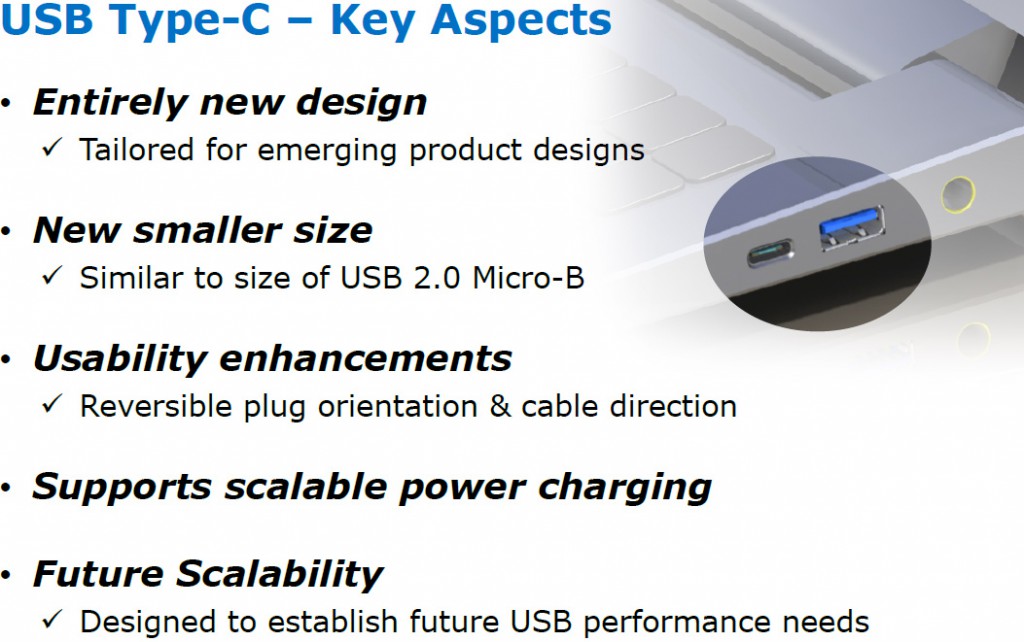Intel Corp. this week demonstrated the new reversible USB 3.1 type C connector that represents the future of the standard. The USB 3.1 type-C offers the same capabilities as the latest specifications do, but in a form-factor that is much more convenient to use.
The key feature of the USB 3.1 type C connector is that it is that it sports reversible plug orientation and cable direction, which means that users will no longer need to be concerned with plug orientation/cable direction, making it easier to plug in. The new connector is similar in size to the existing USB 2.0 Micro-B, but is incompatible with any existing USB connectors/receptacles. The new USB 3.1 type C receptacle opening will be about 8.3mm*2.5mm in size.
As expected, the new USB 3.1 type C will support up to 10Gb/s transfer rates as well as ability to deliver up to 100W of power to devices. The connector, cable and receptacle support scalable power charging. Besides the USB 3.1 type C connector design will scale for future USB bus performance.
As the new USB type-C plug and receptacle will not directly mate with existing USB plugs and receptacles (type-A, type-B, Micro-B, etc.), the type-C specification will define passive new-to-existing cables and adapters to allow users to use their existing products.
The new USB 3.1 type-C interconnection may be considered both as the “USB done right” and “Apple Lightning done right”. The type-C plug is finally reversible and can be plugged-in easily, just like FireWire/IEEE1394, Lightning or any other consumer electronics connectors without concerns regarding orientation; while exact specifications of Lightning are not known, the interconnection hardly supports 10Gb/s transfer rates and 100W power delivery (its target devices – iPad, iPhone and iPod – simply do not need that lot of power).
The USB 3.1 type-C standard will be finalized in mid-2014. The first application with type-C connectors may emerge later this year, but do not expect it to become mainstream until well into 2015.
KitGuru Says: The new USB 3.1 type-C is just what the doctor ordered for portable electronics that require small plugs and receptacles. Besides, the USB 3.1 features excellent usability and very high performance. An excellent standard.
 KitGuru KitGuru.net – Tech News | Hardware News | Hardware Reviews | IOS | Mobile | Gaming | Graphics Cards
KitGuru KitGuru.net – Tech News | Hardware News | Hardware Reviews | IOS | Mobile | Gaming | Graphics Cards





ya mean, finalized mid 2014, i think